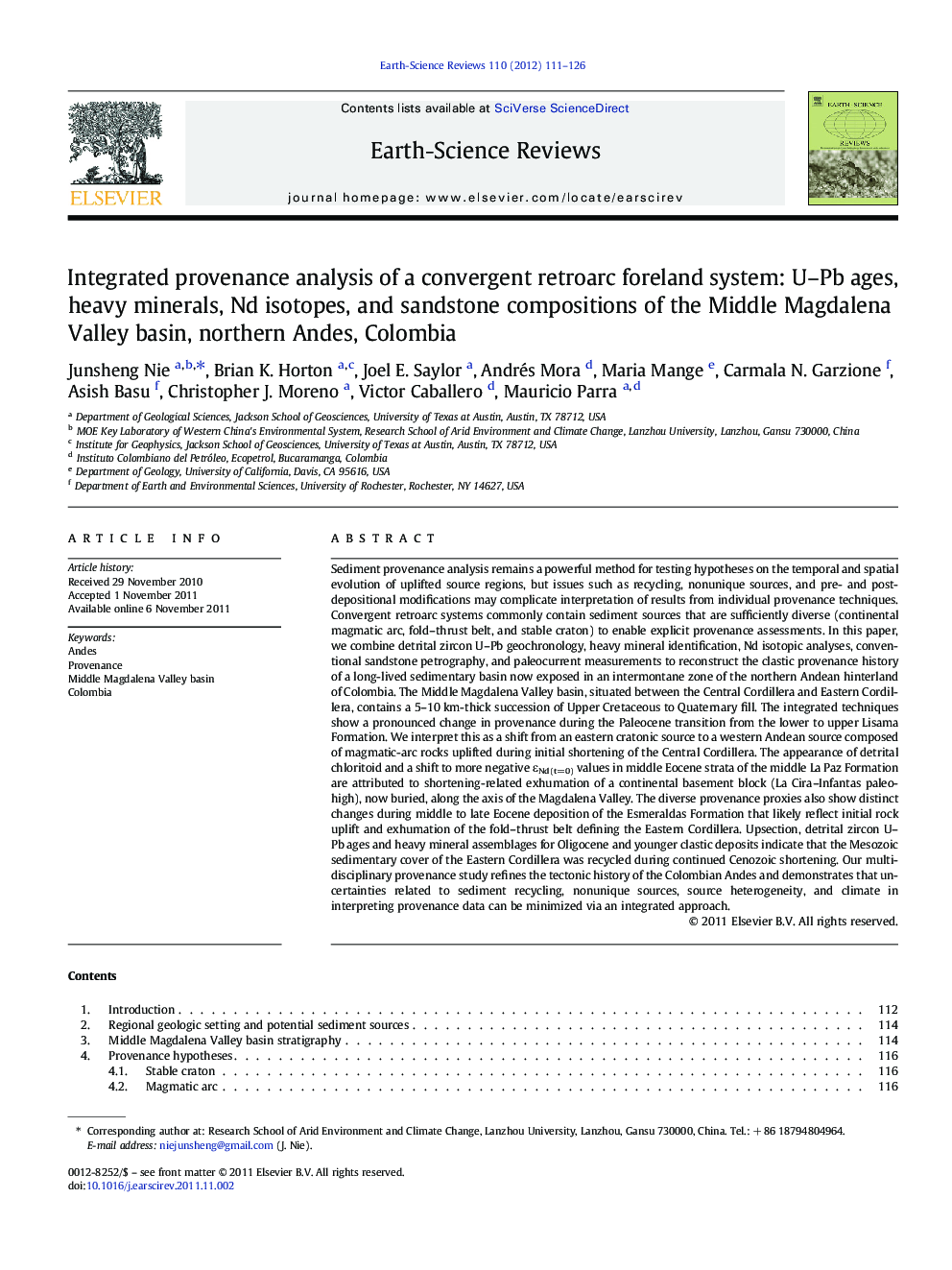| کد مقاله | کد نشریه | سال انتشار | مقاله انگلیسی | نسخه تمام متن |
|---|---|---|---|---|
| 4726010 | 1639996 | 2012 | 16 صفحه PDF | دانلود رایگان |

Sediment provenance analysis remains a powerful method for testing hypotheses on the temporal and spatial evolution of uplifted source regions, but issues such as recycling, nonunique sources, and pre- and post-depositional modifications may complicate interpretation of results from individual provenance techniques. Convergent retroarc systems commonly contain sediment sources that are sufficiently diverse (continental magmatic arc, fold–thrust belt, and stable craton) to enable explicit provenance assessments. In this paper, we combine detrital zircon U–Pb geochronology, heavy mineral identification, Nd isotopic analyses, conventional sandstone petrography, and paleocurrent measurements to reconstruct the clastic provenance history of a long-lived sedimentary basin now exposed in an intermontane zone of the northern Andean hinterland of Colombia. The Middle Magdalena Valley basin, situated between the Central Cordillera and Eastern Cordillera, contains a 5–10 km-thick succession of Upper Cretaceous to Quaternary fill. The integrated techniques show a pronounced change in provenance during the Paleocene transition from the lower to upper Lisama Formation. We interpret this as a shift from an eastern cratonic source to a western Andean source composed of magmatic-arc rocks uplifted during initial shortening of the Central Cordillera. The appearance of detrital chloritoid and a shift to more negative εNd(t=0) values in middle Eocene strata of the middle La Paz Formation are attributed to shortening-related exhumation of a continental basement block (La Cira–Infantas paleohigh), now buried, along the axis of the Magdalena Valley. The diverse provenance proxies also show distinct changes during middle to late Eocene deposition of the Esmeraldas Formation that likely reflect initial rock uplift and exhumation of the fold–thrust belt defining the Eastern Cordillera. Upsection, detrital zircon U–Pb ages and heavy mineral assemblages for Oligocene and younger clastic deposits indicate that the Mesozoic sedimentary cover of the Eastern Cordillera was recycled during continued Cenozoic shortening. Our multidisciplinary provenance study refines the tectonic history of the Colombian Andes and demonstrates that uncertainties related to sediment recycling, nonunique sources, source heterogeneity, and climate in interpreting provenance data can be minimized via an integrated approach.
Journal: Earth-Science Reviews - Volume 110, Issues 1–4, January 2012, Pages 111–126